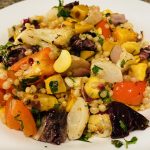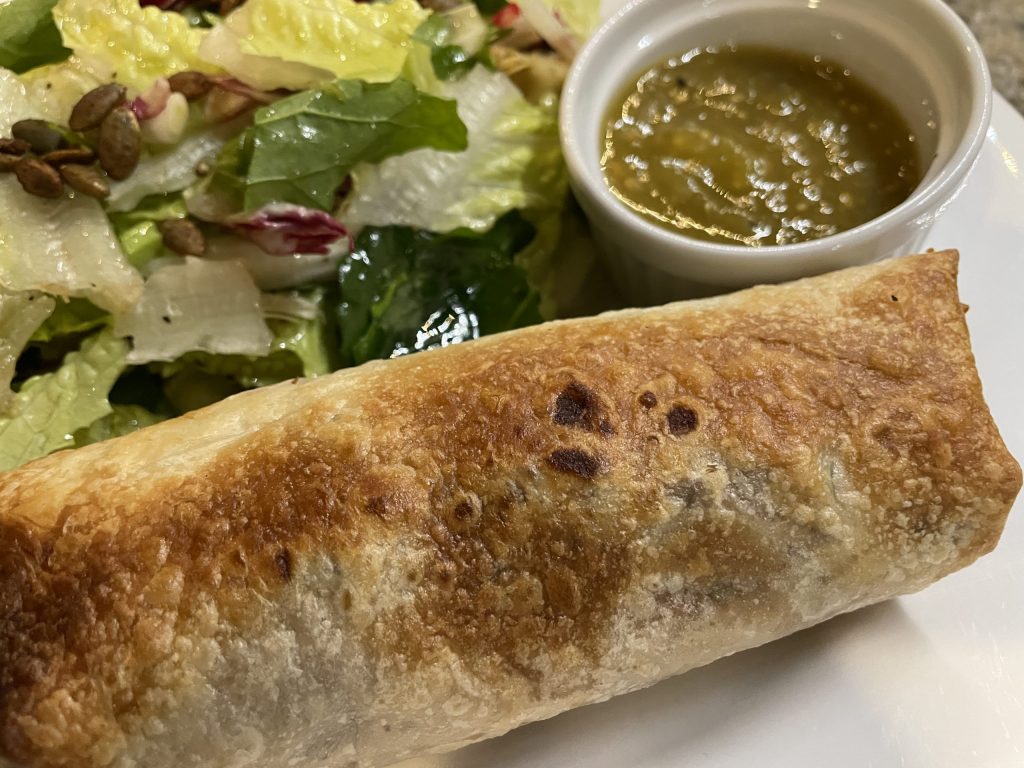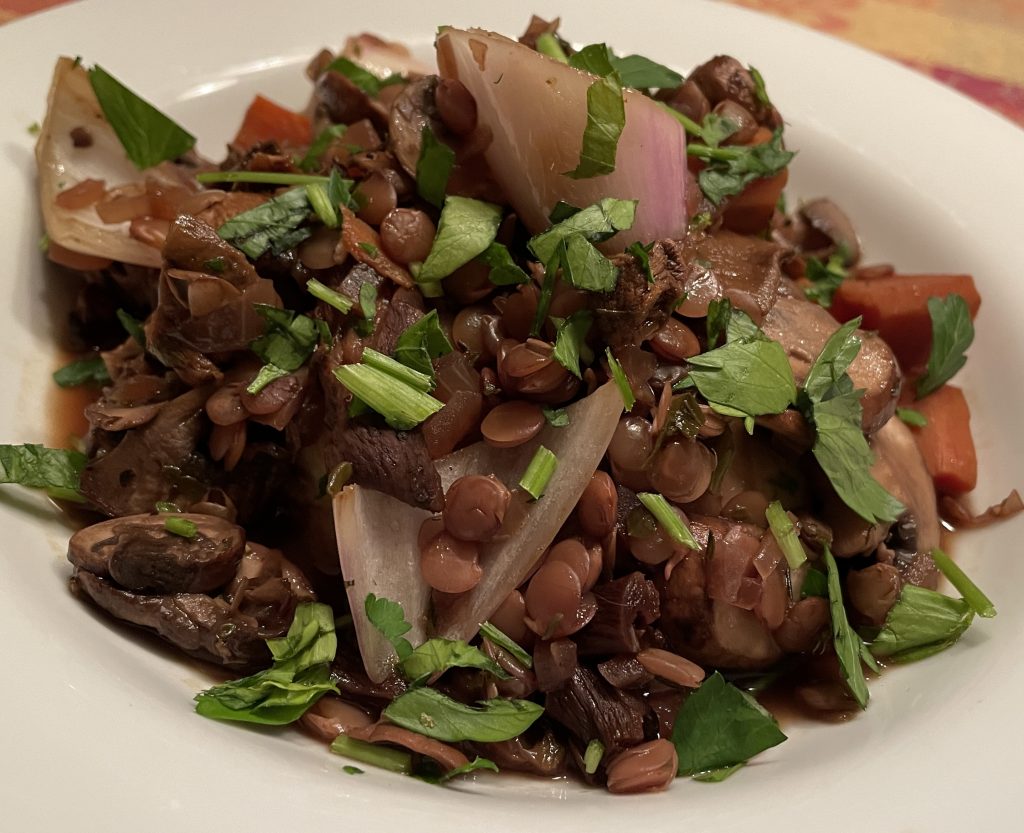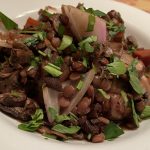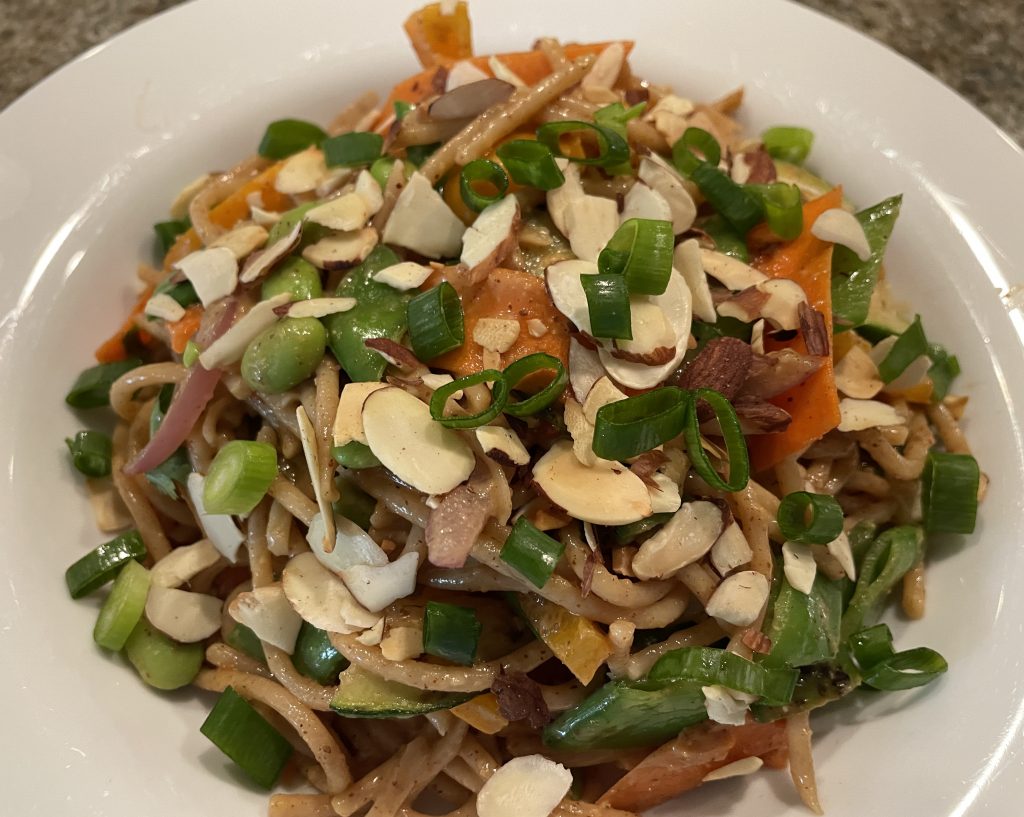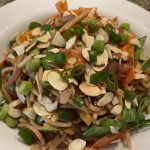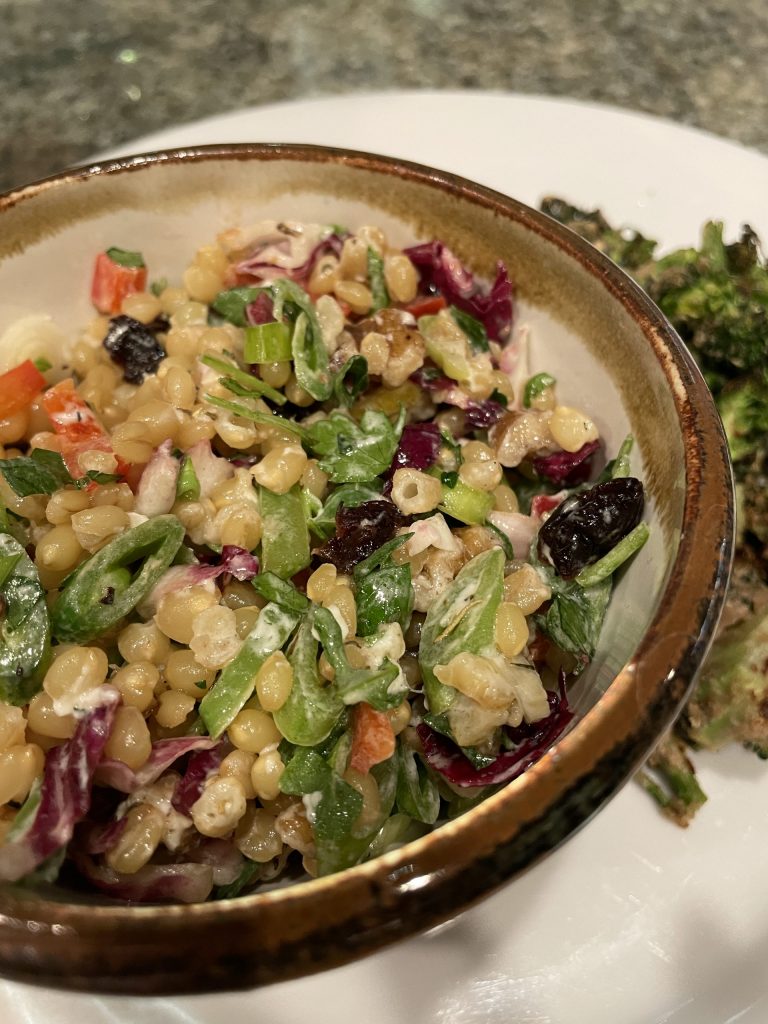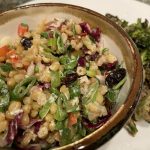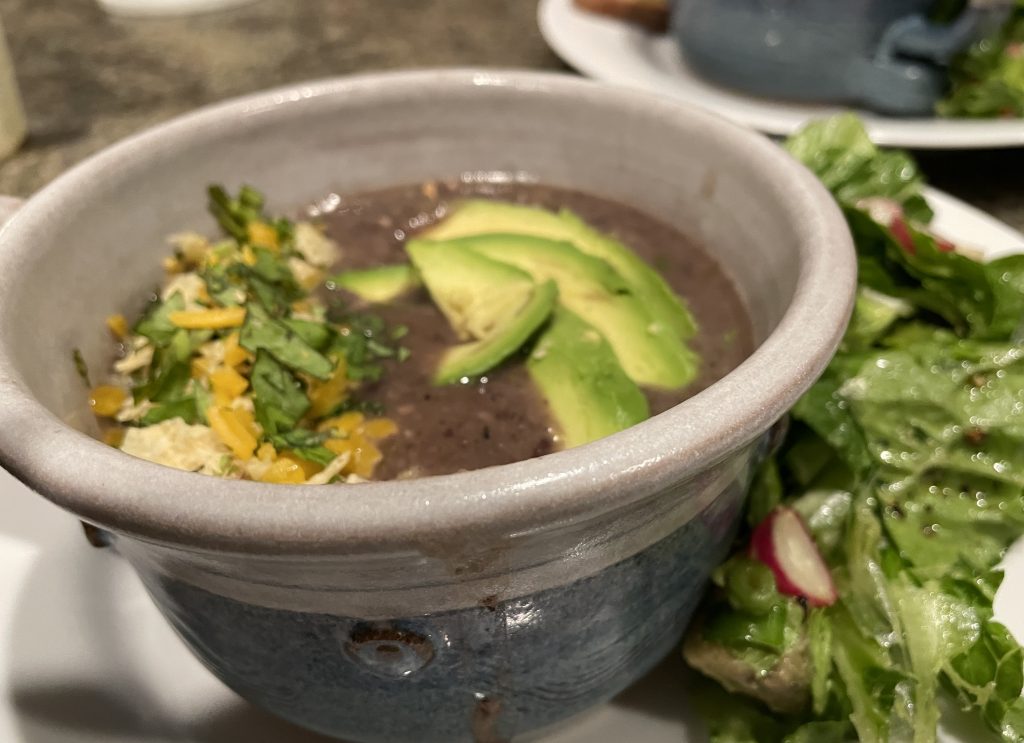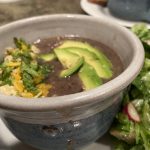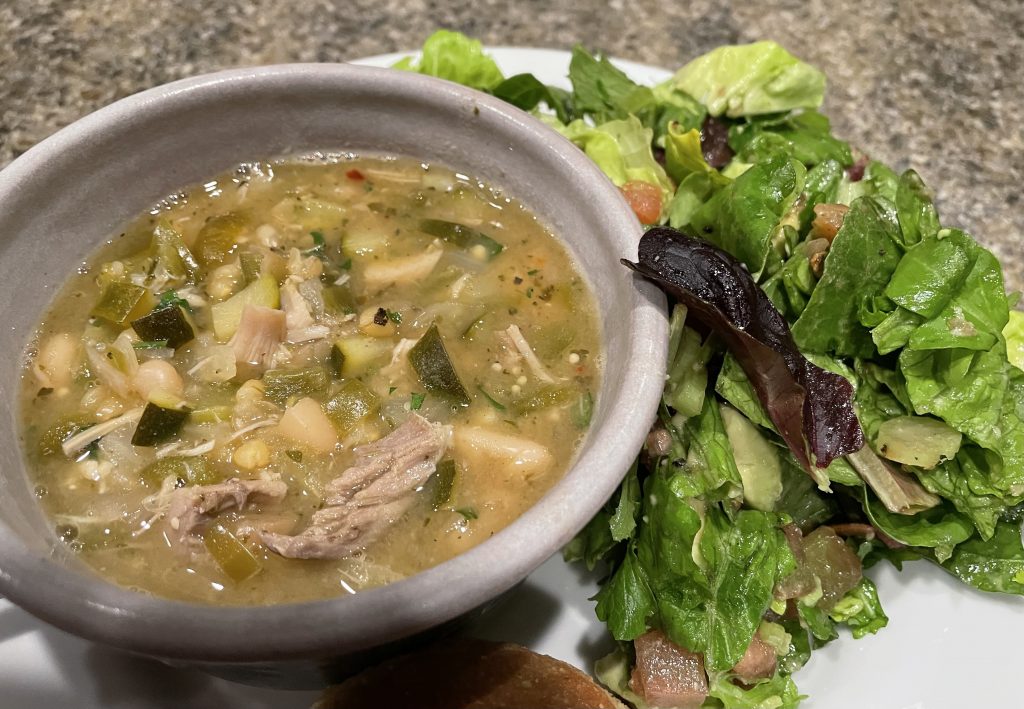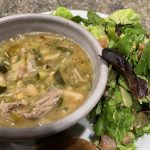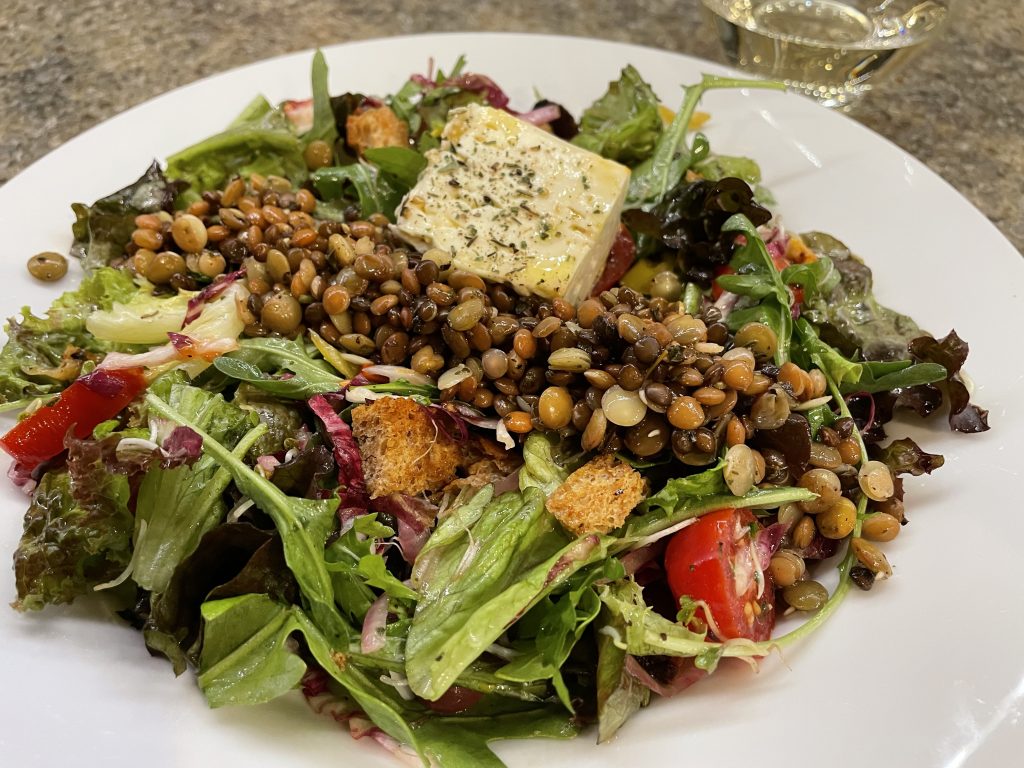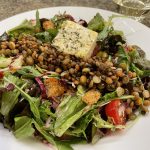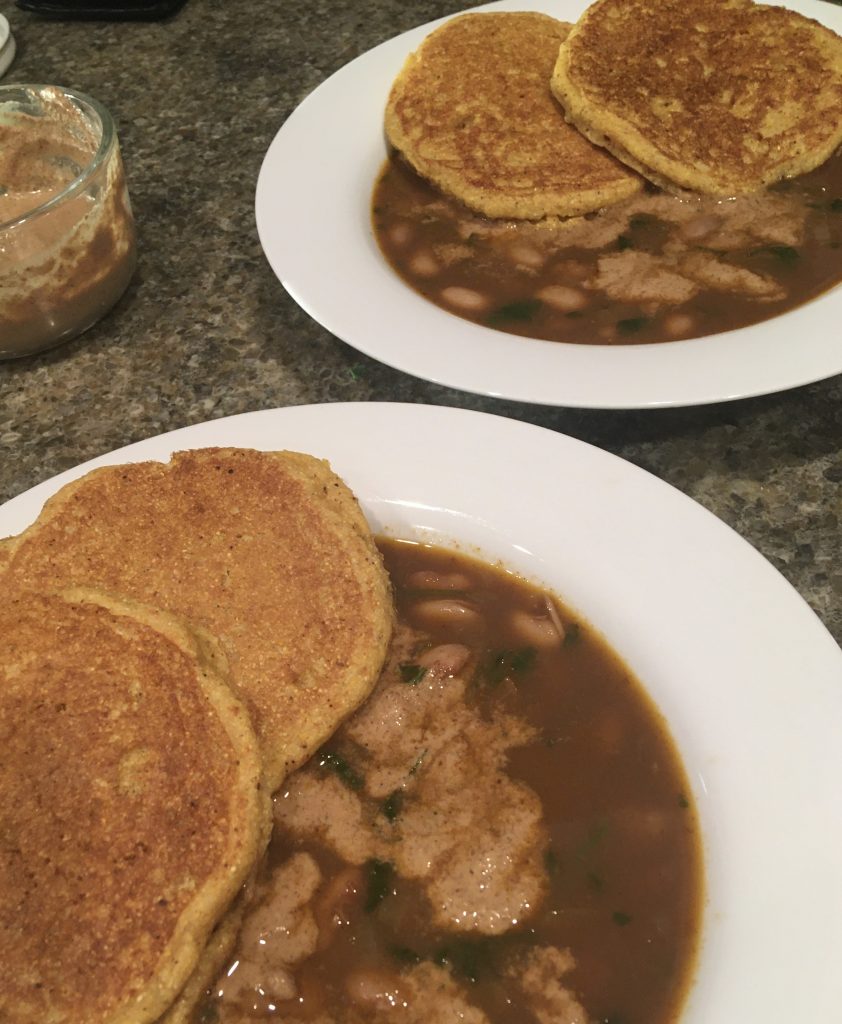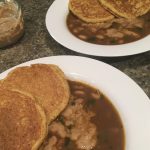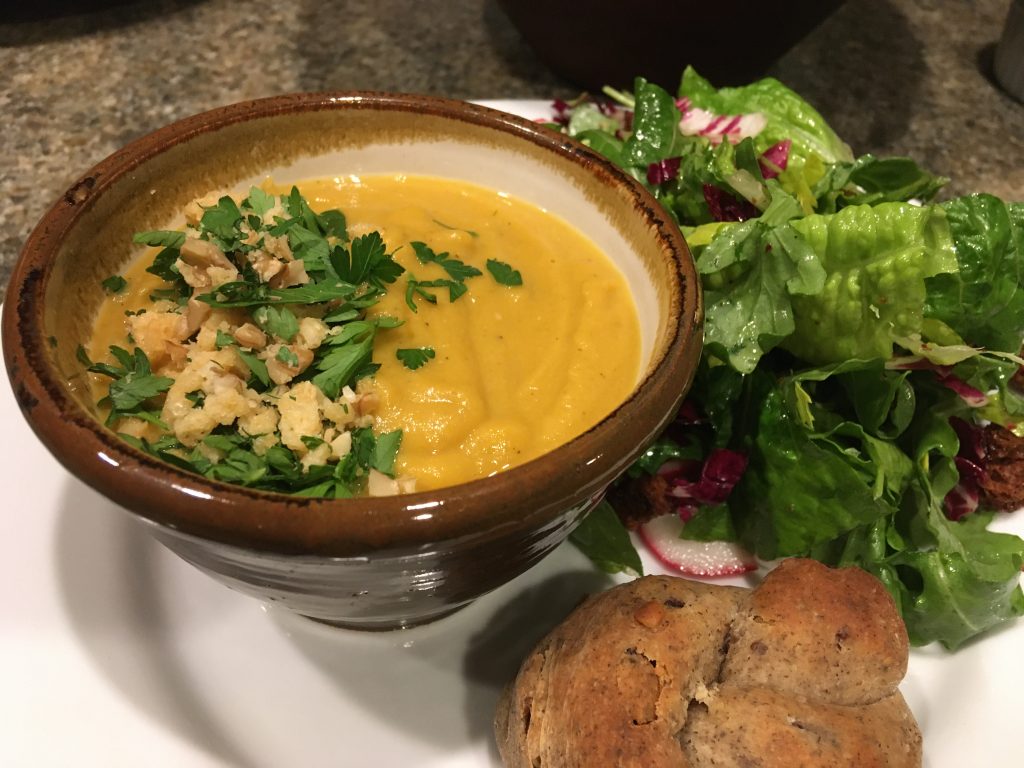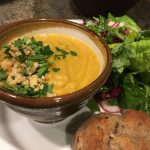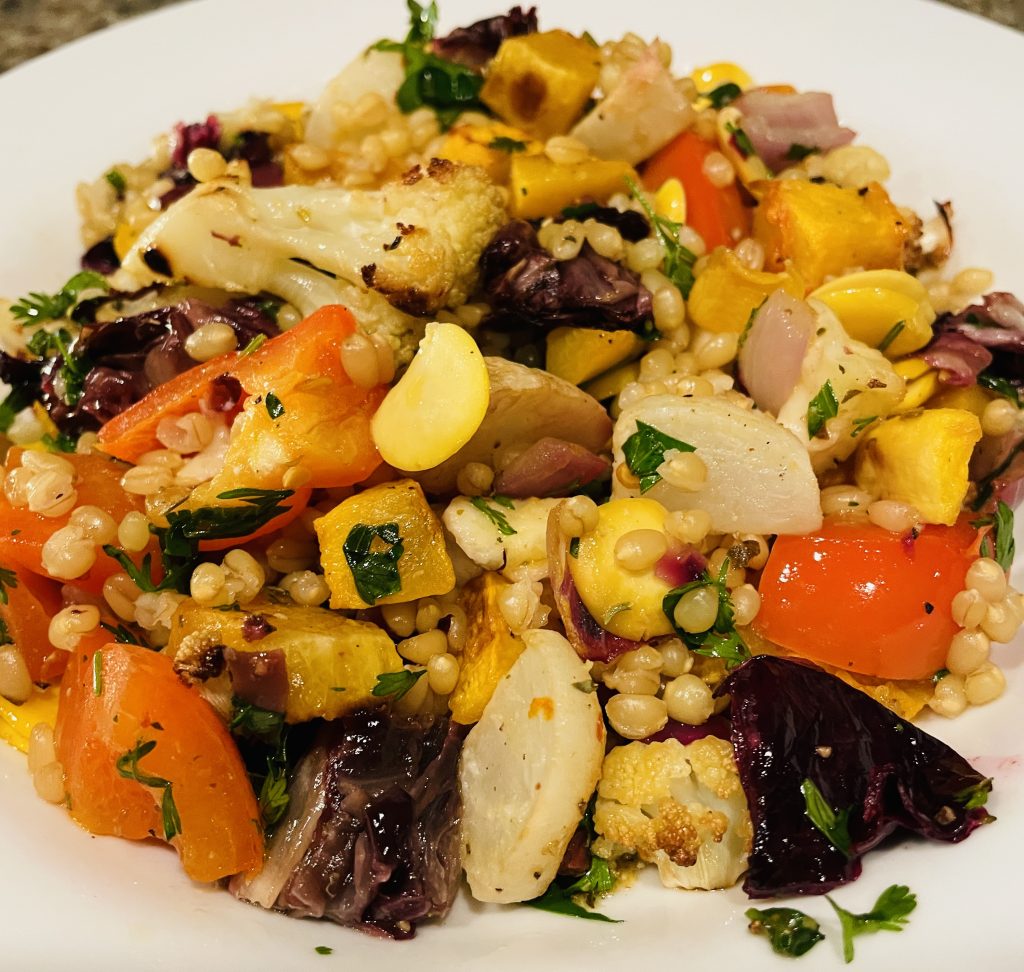
The vegetable and fruit goodness in my weekly Community Supported Agriculture box lay spread out before me. Several late winter holdovers-kale, arugula and citrus. A few early spring cool weather veggies-tender baby Hurakai turnips, French breakfast radishes and a bundle of herbs. And the items that keep well for weeks like this, when everything is still growing, but not ready to harvest-butternut squash and wheat berries. I decided to call it the “shoulder season” veggie box, since nothing was really at peak season. It was end-of-season, beginning-of-season, and any season, all in one box.
I checked my pantry and fridge for additional ingredients that might lend themselves to a plant based dinner. LOL. A veritable treasure trove of red pepper, a partial red onion, last week’s half a cauliflower and a half head of radicchio; along with a chunk of halloumi cheese in the freezer and a jar of lupini beans in the pantry. But surely I can tie an amalgam of these items together into a meal…
With plant based cooking, the “how-to-combine” solution is always the sauce. Which brought to mind the delicious herbal chermoula I add to my Smoky Grilled Vegetables with Halloumi and Chermoula. Actually, why reinvent the wheel? Why not just tweak an already tested recipe? Roasted vegetables with the herby chermoula. And halloumi. And lupini beans. And heck, why not toss in some wheat berries before serving? The result was the Shoulder Season Vegetable roast.
Vegetable stews can be tricky. You see, one never quite knows how the chosen ingredients will play together. Clean-out-the-fridge combinations of veggies are not always best of pals. They can be downright cantankerous if not chosen wisely. Good combinations balance sweet with bitter, soft with crisp and chew, and richness with acidity. Looking at my stack of options, I selected the butternut squash for its soft body and sweetness, balanced by the bitterness of radicchio. The turnips, red onions, cauliflower and lupini brought the crisp, savory contrast. A classic vinaigrette contributed the richness, balanced with lemon’s acidity. The halloumi and wheat berries brought the chew, and the herbs punch it up with freshness. In theory, this could work…
The roast was basically a sheet pan dinner. Yes, it was delicious. Will I (or you, for that matter) always have this very combination of vegetables? I might plan to make that happen…it was that good. But I wouldn’t hesitate to use other vegetables, as long as I follow my combination guidelines. Want some meat in your roast? Fold in small chunks of rotisserie chicken as the roast exits the oven. Or nestle cubes of pancetta onto the baking sheet with the second batch of veggies. On the other hand, if vegan is how you roll, simply omit the halloumi. However you like it, check your fridge, pantry and freezer. And get to roasting.
Shoulder Season Vegetable Roast
Ingredients
- 1 small butternut squash
- 1 bunch Hakurai turnips
- 1 small red onion
- 1 red pepper, cored
- 2 cups cauliflower florets
- 1/2 head radicchio
- 1/3 cup olive oil
- 3 tbsp lemon juice
- 1 1/2 tsp grated lemon zest
- 3/4 tsp dry oregano
- 1/4 tsp ground coriander
- 1/4 tsp dry thyme
- 1/2 tsp salt
- 1/4 tsp pepper
- 1/2 tsp chili flake
- 1 cup shelled lupini beans
- 4 ounces Halloumi cheese, cut in 3/4-inch cubes
- 1/4 cup cilantro, chopped
- 2 tbsp parsley, chopped
- 3 tbsp pitted Kalamata olives, chopped
Instructions
- Cook the wheat berries according to package directions. Drain and cool.
- Place two oven racks such that one is in the upper third of the oven, the other in the lower third. Preheat the oven to 400 degrees F. Peel the butternut and scrape out the inner seeds. Cut into 3/4-inch cubes. Cut the red pepper, onion and radicchio into similar sized pieces. Halve the turnips. Split the squash, turnips and cauliflower in two, then spread onto 2 large lightly oiled sheet pans.
- Whisk together the olive oil, lemon juice and zest, and all the herbs. Add 2 tablespoons of this dressing to the root veggies on the sheet pans and toss to coat. Roast both pans in the hot oven for 20 minutes.
- Combine the red pepper, onion and radicchio, the lupini beans and halloumi in a bowl with 1 tablespoon of the dressing. Reserve the remaining dressing. Remove the sheet pans from the oven and add this vegetable combination to the pan, splitting them evenly between the pans. Return to the oven and roast for an additional 15 minutes.
- Mix the reserved dressing with the cilantro, parsley and olives. Remove the vegetables from the oven and turn into a large mixing bowl. Pour in the herb dressing, then add the cooked wheat berries and stir to combine. Serve.

